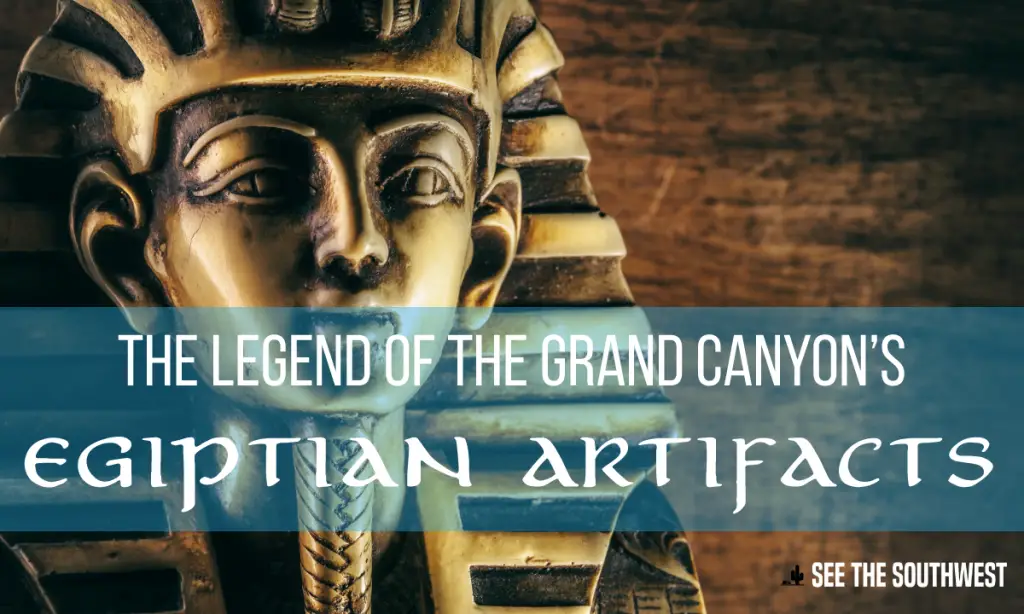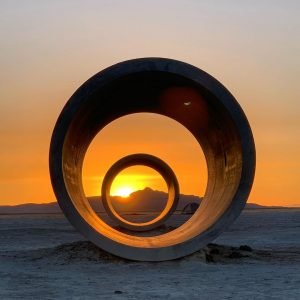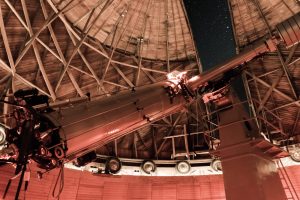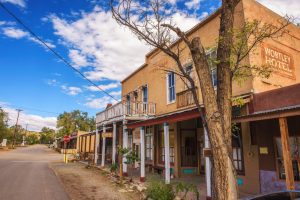
In March and April 1909, the Phoenix Gazette published two stories about the discovery of a great underground citadel hidden in a cave in the Grand Canyon. The first article in March only mentions explorer G.E. Kinkaid and his explorations down the Colorado River. The paper also notes that he made some interesting archeological discoveries, but no details were listed. The second story reports in more depth on Kinkaid’s trip down the Colorado River, where he discovered an ancient, hidden city in hand-carved (not natural) caves.
The Southwest is home to many Pueblo ruins and cities belonging to many different tribes of Pueblo people, but Kinkaid described the city as having an oriental or Egyptian flavor. The hard-carved tunnels and caves and the city were said to contain mummies, a shrine with a figure sitting cross-legged holding a lotus flower or lily in each hand, hieroglyphic writings, and war weapons and copper instruments with sharpened edges as hard as steel. Kinkaid estimated that 50,000 people had once lived in the tunnels and caves. The article goes on to say that the Smithsonian was involved in the study and investigation of the site. These were the only two stories ever published on the subject and most inquires lead to dead ends.
The burning question is, were the stories a hoax … perhaps an April Fool’s Day joke? We know for certain that John Wesley Powell, the first explorer of the Grand Canyon, noted numerous caves in the Grand Canyon on his way down the river. He and his men most certainly discovered remnants of previous civilizations, including a well-worn path, ruins, hieroglyphics and some pottery fragments. In the years since Powell’s discovery, the Grand Canyon has been the site of extensive study. Over 400 Native American sites have been found within Grand Canyon National Park, dating back as far as 12,000 year ago. Is it possible that Kinkaid was simply mistaken in his identification of the origins of the cave? Indeed it is. However, one must wonder at the description of mummies and the Asian influence that Kinkaid mentions in the newspaper article.
The Smithsonian shows no records of such an expedition, nor that they participated in any dig of an underground city in the Grand Canyon. However, the Smithsonian has sent many expeditions to explore the Native American ruins throughout the Southwest and in the Grand Canyon. It seems unlikely that an institution devoted to learning and understanding history would hide such a find, and yet, if Middle Eastern or Asian cultures did make their way to North American around 4,000 or so years ago, it would certainly turn the history of our world upside down.
It is also interesting that so many features in the park bear Egyptian names — Tower of Set, Tower of Ra, Horus Temple, Osiris Temple, and Isis Temple, as well as places in Haunted Canyon with names like Cheops Pyramid, the Buddha Cloister, Buddha Temple, Manu Temple and Shiva Temple.
In fact, the area where the hidden city is supposedly located is actually off limits to the public on government land. Kincaid had this to say about the location … “Some forty-two miles up the river from the El Tovar Crystal Canyon, I saw on the east wall, stains in the sedimentary formation about 2,000 feet above the river bed. There was no trail to this point, but I finally reached it with great difficulty. Above a shelf, which hid it from view from the river, was the mouth of the cave.”
According to one Hopi Indian legend, their ancestors once lived underground in the Grand Canyon until the people of one heart and the people of two hearts began to fight. The chief of the one-heart people caused a tree to grow and pierce the roof of the cavern. The one-heart people sent a messenger to the Temple of the Sun asking for a blessing of peace, good will and rain, but the messenger never returned. The legend says that the messenger will return some day and the Hopi ancestral lands and dwellings will be returned to them.
Is there a connection between Asia or Egypt and North America? If so, has someone covered up the truth? Or perhaps this hidden city is a Native American site that really was discovered and is being protected for the native peoples, hence the reason why no additional articles were published. In either case, the mystery as to why the Phoenix Gazette articles were published remains.
More stories in the Grand Canyon Series include:
Formation of the Grand Canyon
South Rim of the Grand Canyon
North Rim of the Grand Canyon
Inhabitants of the Grand Canyon
River Rafting the Grand Canyon
Grand Canyon Railway
Grand Canyon Skywalk
Condors Make a Comeback in the Grand Canyon
Top 10 Things To Do at the Grand Canyon
Legend of Egyptian Artifacts in the Grand Canyon
The Ghost of Crash Canyon
Phantom Ranch at the Grand Canyon




